
Impressing the locals by Wearing a Kimono in Japan
By Valentina Pucciano
Japan is one of the most fascinating countries in the world thanks to its ancient culture, rich culinary history, and breathtaking landscapes.
One of my dreams was to visit Japan during the cherry blossom season that happens between March and Aprill, so I booked the flight during that period and embarked on a solo journey to the land of the rising sun.
Among many activities planned during my trip, wearing a kimono was on top of my list. The internet offers an extensive array of places where you can make advance bookings and pay upon arrival.
My choice fell on a store in Asakusa.

Asakusa
Asakusa, situated only 5km from Tokyo train station, stands as one of Tokyo’s most iconic neighbourhoods. In this district, you can find Tokyo’s oldest temple called Senso-ji and the Kaminarimon Gate. It’s a complex of Buddhist temples and an area of true Japanese tradition.
The main entrance to reach Senso-ji is near the Kaminarimon Gate which is located next to Asakusa station. By entering through this gate, visitors can enjoy the shopping street called Nakamise Dori where you can buy typical souvenirs and snacks.
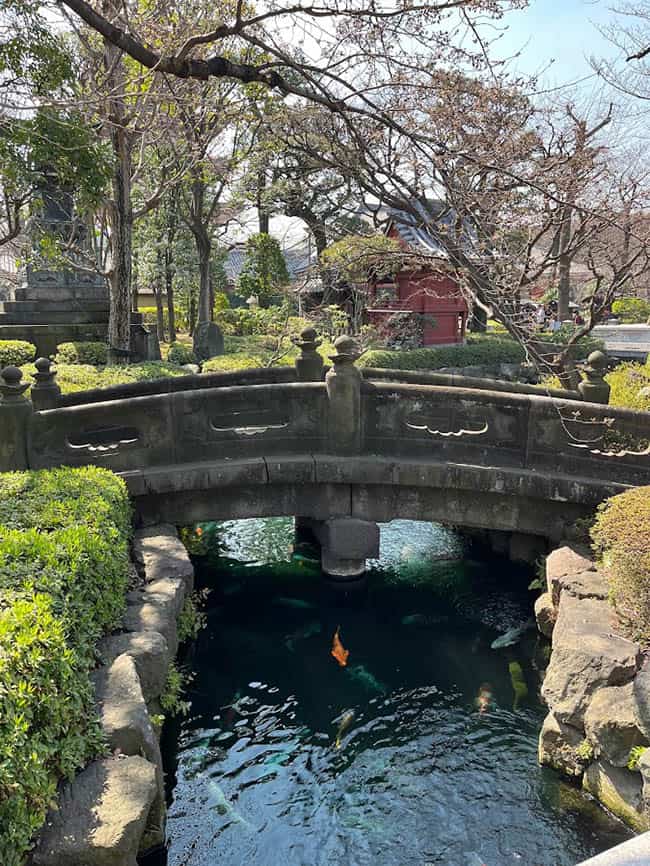
After arriving to the other side of the street, you can see the pagoda and the temple of Buddhist tradition. Although the 250-meter-long street proved to be one of the most crowded places during my Japan visit, the joyous atmosphere significantly eased the journey through the throng to the opposite side.
Asakusa Kimono Rental Koto
After giving a quick look at the temple, I moved in the direction of the kimono rental store called Asakusa Kimono Rental Koto as my appointment was at 10.30 am. The store was on the 6th floor of a building and as soon as I came in, I was greeted by a woman who politely asked me to leave my shoes at the entrance and enter in my socks.

It was a small store but with plenty of choice to choose from. I opted for the lady kimono set (price 2420JPY= $17) that included a hair set and a little bag. I was allowed to wear my kimono until 5 pm and then return it. The store is open everyday from 10 am until 6 pm.
The whole process was an incredible experience: after choosing the colour – I picked a blue kimono adorned with pink flowers and red patches– an elderly Japanese lady started wrapping me in layers of white garments before I could wear the real thing. Given that it was Spring, I was provided a winter kimono which is thicker than the summery version.
After wearing the first layer, I was putting the kimono on and sliding my arms through the sleeves leaving the kimono open.
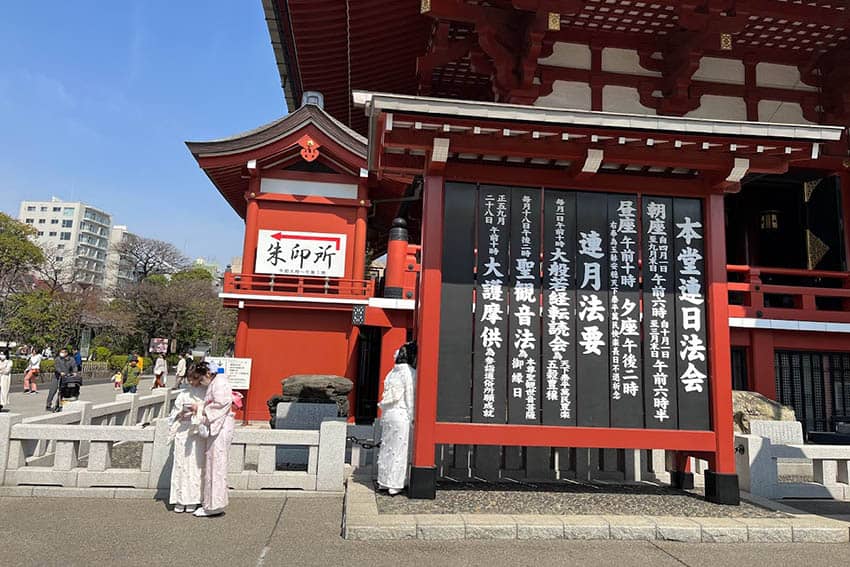
Usually, these garments are quite long so the lady lifted the fabric of the kimono so it could arrive above my ankles. This dress is worn in a way that creates a tube-shaped silhouette for the body. The next step was to drape the left side of the fabric over of the right one. One important rule that I learned is that the left side always goes over the right side. Only dead people wear the kimono the other way around.
To ensure the sides stayed secure, the lady provided me with a belt known as koshihimo. The belt was wrapped around my waist from front to back and the ends were crossed behind my back. The lady tied a bow at the front and pulled down the excess fabric of the kimono so it could cover the belt. She also made sure the back of my kimono was not bunched up.
The final step involved donning a larger belt called obi, which was fastened around my waist by tying a bow at the front.

Lastly, a red flower in my hair to add a touch of flair and I wore socks that separated the big toe from the others to accommodate their traditional shoes known as geta.
It is not a very easy procedure, but this charming lady skilfully managed to dress me in just 15 minutes. If I had been in charge, it would have taken me 2 hours. As she spoke exclusively in Japanese, every time she was looking at me and smiling, I took for granted she was complimenting me on something – or at least this is what I wanted to believe.
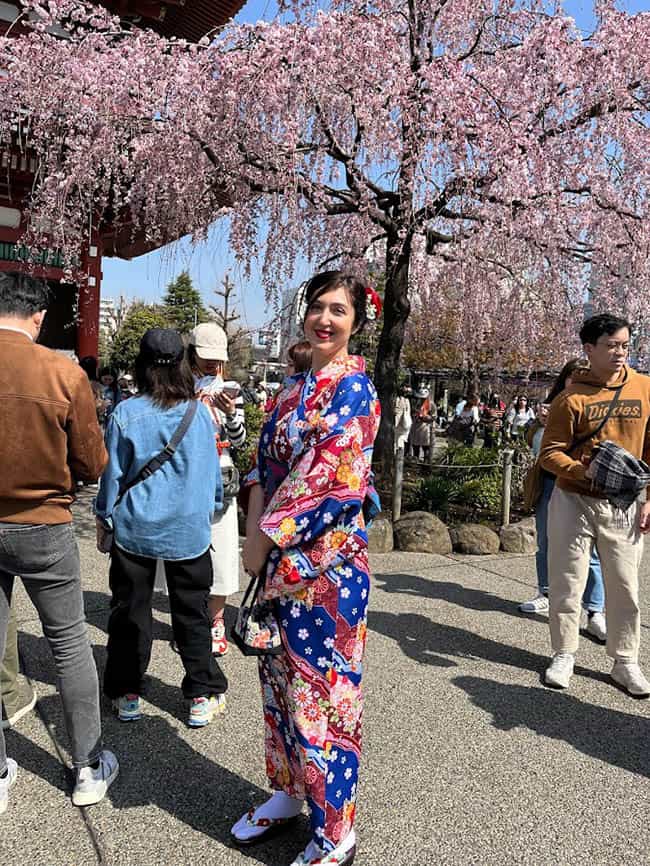
Feeling like a local
As soon as I stepped outside, I sensed all eyes were on me. The locals looked so proud of me wearing their typical garment with confidence and tourists wanted to take a picture with me. I was so pleasantly surprised that, among all the Japanese people in kimono attire, some visitors chose me to take a picture with. I was a bit confused too as I had to highlight the fact that I was not a local in case they felt disappointed, but their enthusiasm truly brightened my day.
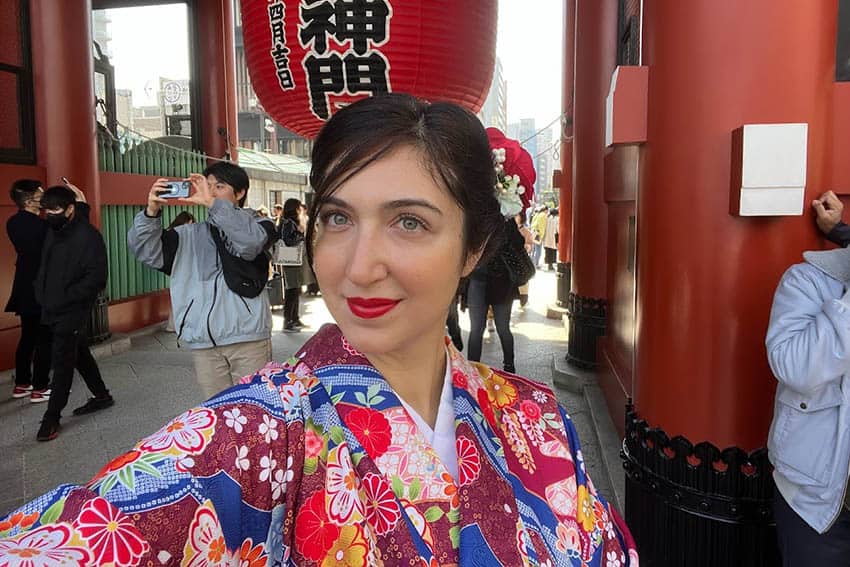
Everything seemed perfect in that moment: it was a sunny day in Tokyo, I was wearing a kimono and feeling like a star strolling down the street.
The dream came to an and end though as at 5 pm I had to return my the garment.
Once I left the store and wore my regular clothes, it seemed like I had lost all my superpowers since no one wanted to take a picture with me anymore. Well, it made sense I suppose.

- Arezzo, Tuscany: A Stunning Find - September 3, 2024
- Fall Clothing for Your Travels - August 30, 2024
- Mekong Chronicles: The River That Shaped Southeast Asia - August 28, 2024



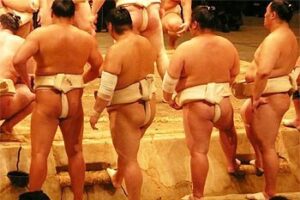

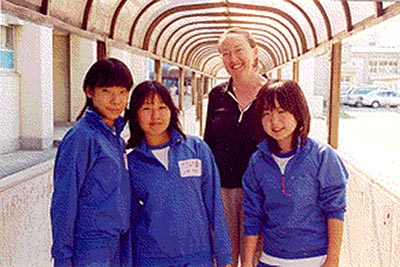
Japan is a country that is rich in culture, history, and natural beauty. With the country reopening its borders to the world, there are several destinations that are poised to captivate visitors in 2024.